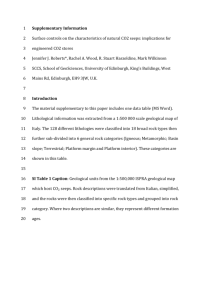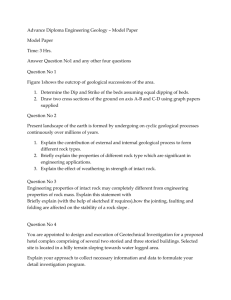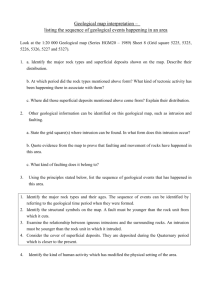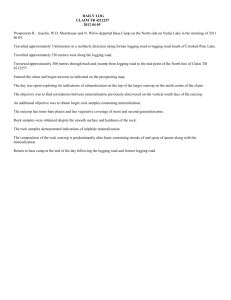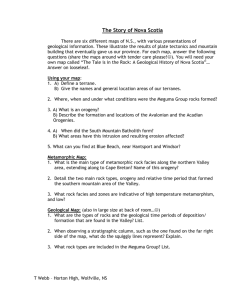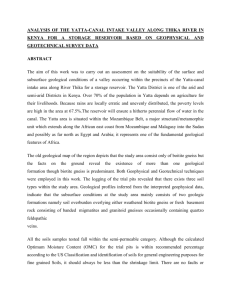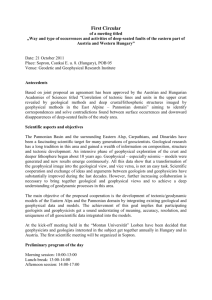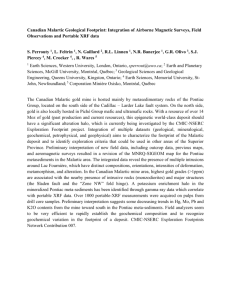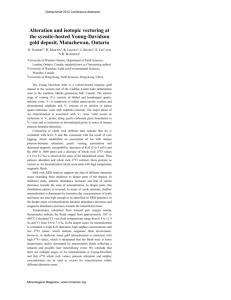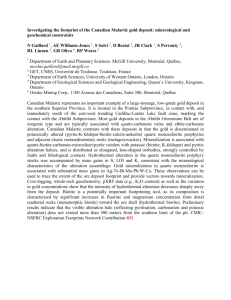LafreniereBerube
advertisement
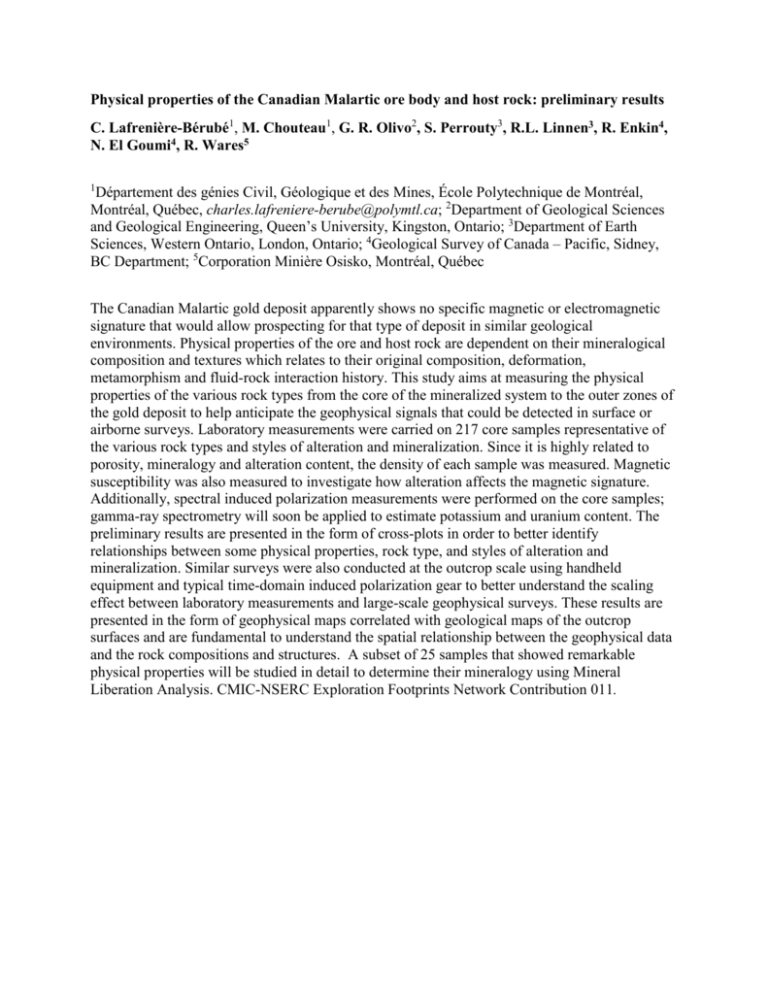
Physical properties of the Canadian Malartic ore body and host rock: preliminary results C. Lafrenière-Bérubé1, M. Chouteau1, G. R. Olivo2, S. Perrouty3, R.L. Linnen3, R. Enkin4, N. El Goumi4, R. Wares5 1 Département des génies Civil, Géologique et des Mines, École Polytechnique de Montréal, Montréal, Québec, charles.lafreniere-berube@polymtl.ca; 2Department of Geological Sciences and Geological Engineering, Queen’s University, Kingston, Ontario; 3Department of Earth Sciences, Western Ontario, London, Ontario; 4Geological Survey of Canada – Pacific, Sidney, BC Department; 5Corporation Minière Osisko, Montréal, Québec The Canadian Malartic gold deposit apparently shows no specific magnetic or electromagnetic signature that would allow prospecting for that type of deposit in similar geological environments. Physical properties of the ore and host rock are dependent on their mineralogical composition and textures which relates to their original composition, deformation, metamorphism and fluid-rock interaction history. This study aims at measuring the physical properties of the various rock types from the core of the mineralized system to the outer zones of the gold deposit to help anticipate the geophysical signals that could be detected in surface or airborne surveys. Laboratory measurements were carried on 217 core samples representative of the various rock types and styles of alteration and mineralization. Since it is highly related to porosity, mineralogy and alteration content, the density of each sample was measured. Magnetic susceptibility was also measured to investigate how alteration affects the magnetic signature. Additionally, spectral induced polarization measurements were performed on the core samples; gamma-ray spectrometry will soon be applied to estimate potassium and uranium content. The preliminary results are presented in the form of cross-plots in order to better identify relationships between some physical properties, rock type, and styles of alteration and mineralization. Similar surveys were also conducted at the outcrop scale using handheld equipment and typical time-domain induced polarization gear to better understand the scaling effect between laboratory measurements and large-scale geophysical surveys. These results are presented in the form of geophysical maps correlated with geological maps of the outcrop surfaces and are fundamental to understand the spatial relationship between the geophysical data and the rock compositions and structures. A subset of 25 samples that showed remarkable physical properties will be studied in detail to determine their mineralogy using Mineral Liberation Analysis. CMIC-NSERC Exploration Footprints Network Contribution 011.
